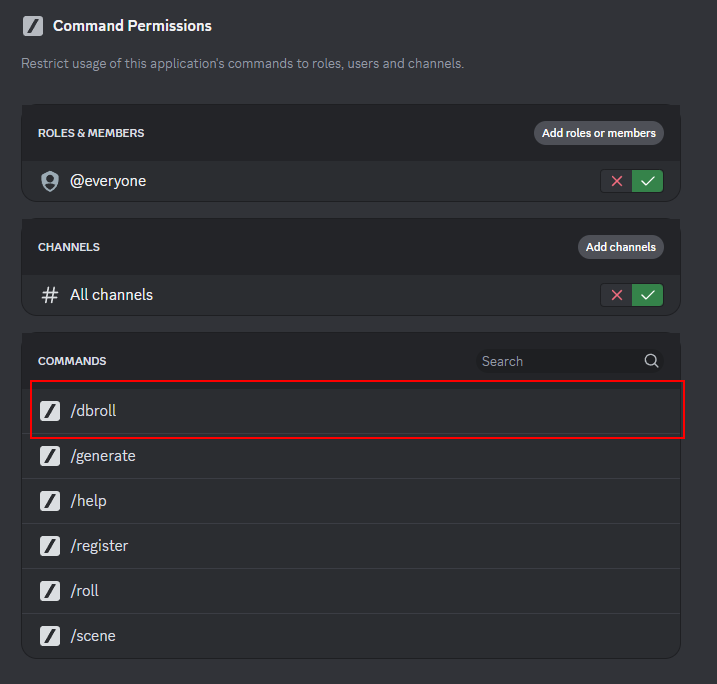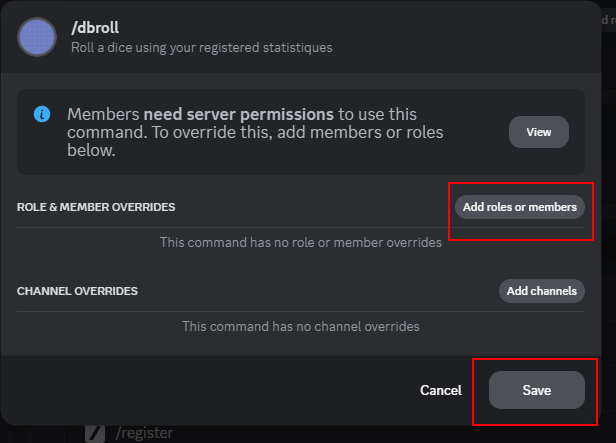Character roll
danger
Until the template is registered, the commands using the database (/dbroll, /macro, etc.) are disabled.
When the template is registered, the commands will be enabled for all users.
You can restrict the use of commands to specific users or roles by following the steps below:





These commands will be "hidden" for users who do not have the permission to use them.